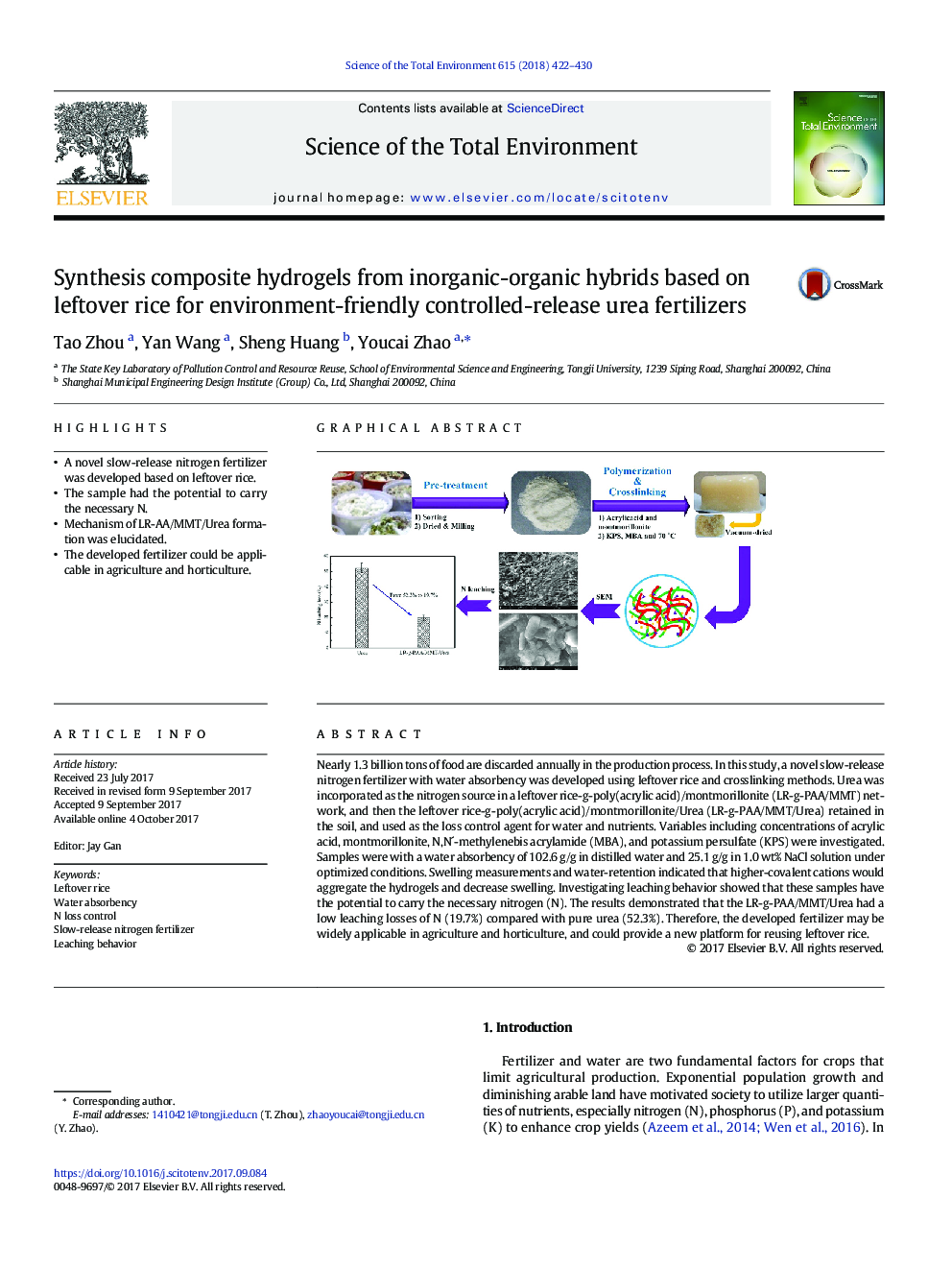| Article ID | Journal | Published Year | Pages | File Type |
|---|---|---|---|---|
| 5749797 | Science of The Total Environment | 2018 | 9 Pages |
â¢A novel slow-release nitrogen fertilizer was developed based on leftover rice.â¢The sample had the potential to carry the necessary N.â¢Mechanism of LR-AA/MMT/Urea formation was elucidated.â¢The developed fertilizer could be applicable in agriculture and horticulture.
Nearly 1.3 billion tons of food are discarded annually in the production process. In this study, a novel slow-release nitrogen fertilizer with water absorbency was developed using leftover rice and crosslinking methods. Urea was incorporated as the nitrogen source in a leftover rice-g-poly(acrylic acid)/montmorillonite (LR-g-PAA/MMT) network, and then the leftover rice-g-poly(acrylic acid)/montmorillonite/Urea (LR-g-PAA/MMT/Urea) retained in the soil, and used as the loss control agent for water and nutrients. Variables including concentrations of acrylic acid, montmorillonite, N,N´-methylenebis acrylamide (MBA), and potassium persulfate (KPS) were investigated. Samples were with a water absorbency of 102.6 g/g in distilled water and 25.1 g/g in 1.0 wt% NaCl solution under optimized conditions. Swelling measurements and water-retention indicated that higher-covalent cations would aggregate the hydrogels and decrease swelling. Investigating leaching behavior showed that these samples have the potential to carry the necessary nitrogen (N). The results demonstrated that the LR-g-PAA/MMT/Urea had a low leaching losses of N (19.7%) compared with pure urea (52.3%). Therefore, the developed fertilizer may be widely applicable in agriculture and horticulture, and could provide a new platform for reusing leftover rice.
Graphical abstractDownload high-res image (164KB)Download full-size image
